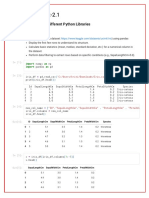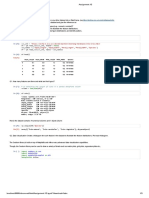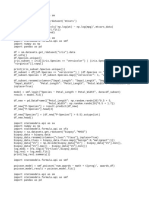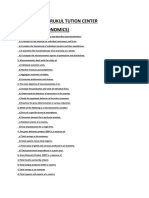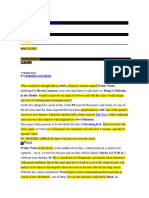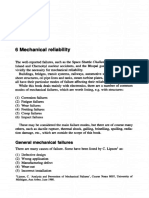0% found this document useful (0 votes)
48 views3 pagesAssignment 2
This document performs several preprocessing tasks on an iris dataset: it calculates completeness, replaces special values with NA, defines validation rules in a text file, checks for rule violations, and identifies outliers in sepal length using boxplots. No rules are found to be violated.
Uploaded by
BHAVIKA MALHOTRACopyright
© © All Rights Reserved
We take content rights seriously. If you suspect this is your content, claim it here.
Available Formats
Download as PDF, TXT or read online on Scribd
0% found this document useful (0 votes)
48 views3 pagesAssignment 2
This document performs several preprocessing tasks on an iris dataset: it calculates completeness, replaces special values with NA, defines validation rules in a text file, checks for rule violations, and identifies outliers in sepal length using boxplots. No rules are found to be violated.
Uploaded by
BHAVIKA MALHOTRACopyright
© © All Rights Reserved
We take content rights seriously. If you suspect this is your content, claim it here.
Available Formats
Download as PDF, TXT or read online on Scribd
/ 3












